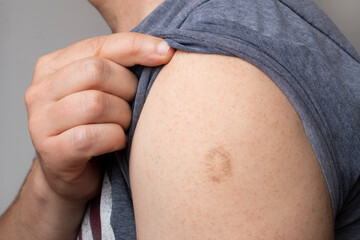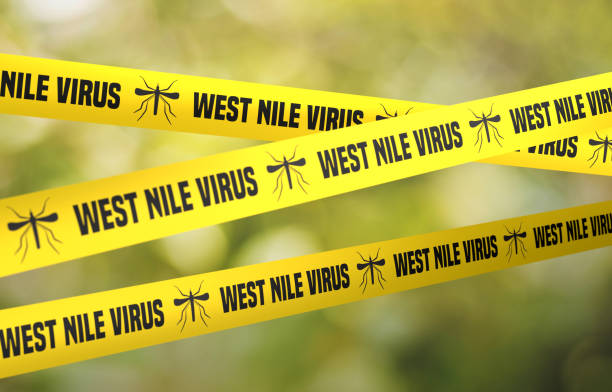Smallpox, once a rampant and deadly infectious disease, is caused by a virus that is no longer present in the natural environment. It spreads from person to person, typically through respiratory droplets or direct contact with the skin lesions of infected individuals.
The symptoms of this infectious disease resembled those of the flu, often starting with fever and malaise, followed by the characteristic rash that covered the body.
The impact of this infectious disease was severe, with around 30% of infected individuals succumbing to the disease. In the 1900s, prior to its eradication in 1980, smallpox claimed the lives of an estimated 300–500 million people globally. The World Health Organization (WHO) labeled smallpox “one of the most devastating diseases known to humanity.”
Brief history of smallpox
Smallpox, believed to have existed for at least 3,000 years, left its mark on history with evidence found on Egyptian mummies dating back to the 18th and 20th Egyptian dynasties. As civilizations flourished and trade routes expanded, the disease spread across continents.
In ancient times, survivors of this infectious disease were observed to be immune to future infections, leading to the practice of deliberately exposing individuals to the virus for protection. This method involved either inhaling or applying material from smallpox sores to the skin. Eventually, Dr. Edward Jenner discovered that inoculating people with the milder cowpox virus provided immunity against this infectious disease.
During the 1800s, advancements led to the development of the smallpox vaccine, utilizing a poxvirus similar to smallpox but less harmful. Despite these efforts, this infectious disease persisted globally, with the last outbreak in the United States occurring in 1949.
In 1967, the World Health Organization (WHO) initiated a comprehensive campaign to eradicate smallpox worldwide, employing mass vaccination and surveillance strategies. This concerted effort bore fruit, with no reported cases of of this viral infection since 1977. Finally, in 1980, the WHO officially declared smallpox eradicated.
Today, the virus is only kept in secure facilities in the United States and Russia for research purposes. Routine smallpox vaccinations ceased in the United States in 1972 and in most other countries by 1986, as the threat of the disease diminished. Many adults today likely received the vaccine during childhood.
Gestation period
After exposure to the virus, the incubation period for smallpox typically spans 10–12 days before symptoms manifest. However, this duration can vary, ranging from as short as 7 days to as long as 17 days.
The virus gains entry into the body through membranes in the mouth, nose, or eyes. Following a period of 3-4 days, it migrates to the lymph nodes and then enters the bloodstream, where it undergoes multiplication. During this phase, no symptoms are evident.
Around 8 days post-exposure, the virus disseminates to the small blood vessels of the skin and returns to the membranes of the mouth. At this juncture, individuals may begin to feel unwell, although symptoms have yet to surface.
Causes of smallpox
This infectious disease is caused by the variola virus, which exists in two forms: variola major and variola minor. Variola major is the more perilous strain, responsible for a smallpox variant that claimed the lives of approximately 30% of infected individuals. On the other hand, variola minor causes a less lethal form of smallpox, resulting in mortality rates of around 1%.
Within the spectrum of smallpox, two variants, hemorrhagic and malignant smallpox, present heightened severity compared to the common strain:
- Hemorrhagic Smallpox: This variant predominantly affects adults, including pregnant individuals, rather than children. Infected individuals experience more severe symptoms, such as fever, pain, and headaches, accompanied by bleeding from blisters and mucous membranes. Typically, death occurs within a week due to blood poisoning.
- Malignant Smallpox: Primarily afflicting children, malignant smallpox is characterized by flat lesions on the skin surface instead of raised blisters. Individuals with this variant also commonly succumb to blood poisoning.
Both hemorrhagic and malignant smallpox variants pose greater mortality risks compared to the typical form of the disease
Symptoms of Smallpox
Smallpox, aptly named for its characteristic symptom of small skin-colored blisters, typically appears on the face, arms, and body, eventually filling with pus.
Additional symptoms encompass:
- Flu-like fatigue
- Headache
- Body aches
- Severe back pain
- Occasional vomiting
- Elevated fever
- Mouth sores and blisters facilitate the virus spread to the throat
- Deteriorating skin rash
- Potential blindness from blisters forming near the eyes
Early symptoms of smallpox:
Around 12 days following exposure to the virus, early symptoms of the infectious disease emerge. These symptoms include a high fever, extreme weakness, vomiting, and body aches. Roughly 2 days later, the virus begins to propagate to the outer layer of the skin. Once fever sets in, the individual becomes contagious, capable of transmitting the disease to others.
Between 12-14 days post-exposure, a flat red rash materializes, initially appearing in the membranes of the mouth and throat, as well as on the face and hands. Subsequently, it spreads across the body, typically within 24 hours. Within a day or two, the rash evolves into raised bumps filled with clear fluid. These bumps transform into pus-filled blisters shortly thereafter.
The progression of smallpox rash can be outlined as follows:
- The rash commences with flat red sores in the mouth before swiftly extending to cover the entire body within approximately 24 hours.
- The red sores transition into raised bumps filled with clear liquid.
- These bumps evolve into pus-filled blisters within a day or two.
- Subsequently, the blisters crust over, usually within about a week.
- Scabs form over the blisters, eventually falling off over the course of 3–4 weeks. These scabs can result in permanent scarring.
Smallpox and chickenpox
Both viral infections, characterized by skin blisters, have notable distinctions:
- Causative Viruses: Smallpox stems from the variola virus, whereas chickenpox is caused by the varicella virus.
- Severity: Chickenpox typically presents as a milder illness compared to smallpox, which historically had a higher mortality rate, claiming about 30% of those infected.
- Pattern of Rash: Chickenpox sores typically appear first on the trunk or face, rarely affecting the palms or soles of the feet. In contrast, smallpox sores often emerge initially in the mouth, throat, face, or forearms before spreading extensively. Moreover, this infectious disease commonly manifests in sores on the palms and soles.
Transmission of Smallpox
- Smallpox spreads from person to person, with contagiousness beginning once fever develops, peaking within the first 7–10 days. Transmission primarily occurs through saliva droplets during close contact, coughing, sneezing, or speaking.
- Infection can also result from contact with contaminated clothing, bedding, or bodily fluids.
- Although rare, smallpox transmission has occurred in enclosed spaces, likely facilitated by air ventilation systems.
- The virus is not spread by animals or insects.
- In the event of deliberate release as an act of terrorism, governments worldwide maintain stockpiles of smallpox vaccines to mitigate spread.
Diagnosis
Diagnosing this infectious disease poses a challenge due to its absence from medical practice for decades. However, if a case were to arise, diagnosis typically involves testing a tissue sample obtained from a smallpox blister. Given the gravity of such a diagnosis, a single case would prompt a global health emergency response.
Treatments
In the event of a confirmed case, treatment options include two antiviral drugs approved by the U.S. FDA:
- Tecovirimat (TPOXX) and
- Brincidofovir (Tembexa)
Both medications have demonstrated efficacy in halting the replication of the smallpox virus. Additionally, cidofovir, though not FDA-approved specifically for smallpox treatment, could be utilized under certain circumstances, such as through emergency use authorization during an outbreak.
Although these drugs have not been directly tested in individuals with smallpox, studies in animals with diseases similar to this infectious disease suggest their potential efficacy. Tecovirimat and cidofovir are stockpiled within the U.S. Strategic National Stockpile to ensure readiness in the event of a smallpox outbreak.
Administration of the smallpox vaccine within 3–4 days of exposure to the virus may mitigate disease severity or prevent infection altogether. Beyond vaccination, medical management focuses on alleviating symptoms such as fever and body aches, as well as addressing any secondary infections that may arise due to compromised immunity. Antibiotics may be prescribed to combat bacterial infections concurrent with the viral infectious disease.
Complications
Smallpox, particularly in its hemorrhagic or malignant forms, poses a heightened risk of mortality, especially among pregnant individuals or those with compromised immune systems.
Survivors of this virus often contend with lasting effects, including scarring on the face and body. In rare instances, blindness may occur as a complication. Moreover, this viral infectious disease can lead to infertility in men or those assigned male at birth (AMAB), and it may result in miscarriages or stillbirths in pregnant individuals.
Smallpox Vaccine
The smallpox vaccine, derived from the vaccinia virus, a close relative of the variola virus, serves as a crucial defense against smallpox. By stimulating the body’s immune system to produce antibodies, the vaccine aids in recognizing and combating the variola virus, thereby thwarting the infectious disease.
Routine administration of the smallpox vaccine ceased in 1972 in countries where cases were no longer prevalent, including the United States. Similarly, other member countries of the World Health Organization (WHO) halted routine vaccinations by 1986.
The duration of protection conferred by the smallpox vaccine remains uncertain, with some experts suggesting efficacy for up to 5 years before waning over time. Consequently, individuals vaccinated during childhood may face potential infection risk from the variola virus in the future. Notably, individuals who have contracted the infectious disease and survived are known to possess lifelong immunity.
WHO, along with member countries, maintains an emergency stockpile of the smallpox vaccine. Its utilization today is rare, primarily restricted to individuals with direct exposure to the variola virus, such as laboratory researchers engaged in work involving variola or similar viruses.
Invention of the vaccine
Edward Jenner, an English doctor, developed the first successful smallpox vaccine in 1796. His breakthrough came when he observed that milkmaids who contracted cowpox appeared to be immune to the infectious disease. Jenner hypothesized that exposure to the cowpox virus could confer protection against smallpox. To test his theory, he inoculated the 9-year-old son of his gardener with cowpox and later exposed him to smallpox. Remarkably, the boy remained unaffected by the viral infectious disease, validating Jenner’s vaccine.
Jenner’s smallpox vaccine gained widespread acceptance, eventually becoming a cornerstone in the fight against smallpox. During the 1800s, the original cowpox virus in the vaccine was replaced with the vaccinia virus.
The Vaccine Scar

Individuals who received the smallpox vaccine, particularly those aged 40 or older, often bear a permanent scar on their arm at the injection site. This scar is not a result of the needle but rather stems from the body’s immune response to the controlled infection induced by the live vaccinia virus present in the vaccine. Exposure to the virus typically led to the formation of a sore, itchy bump at the injection site, which progressed into a larger blister before eventually resolving into a scar.
The development of a sore bump and subsequent scar at the injection site signifies the successful completion of the immunization process.
Risk of taking the vaccine
The smallpox vaccine typically induces mild side effects, including:
- Soreness at the injection site
- Itching
- Swollen lymph nodes
- Fever
- Headache
- Body aches
- Mild rash
- Fatigue
However, in rare cases, some side effects can pose serious risks, particularly for individuals with weakened immune systems. These adverse reactions may range from skin manifestations to a severe nervous system condition known as encephalitis, which can result in convulsions, coma, and even death. Nevertheless, such severe side effects are exceptionally rare. Historical data indicates that for every 1 million people vaccinated against smallpox, only one to two individuals experienced fatal reactions.
Individuals at higher risk of adverse reactions to the smallpox vaccine include:
- Pregnant or breastfeeding individuals
- Those with skin disorders like eczema
- Individuals with weakened immune systems due to medical conditions such as leukemia or HIV
- Individuals undergoing medical treatments, such as cancer therapies, that compromise immune function
- Individuals who have previously experienced a serious allergic reaction to a smallpox vaccine
Can smallpox be a threat to public health?
The potential threat of a smallpox outbreak in the present era is challenging to gauge accurately due to several factors:
- Increased Population with Weakened Immune Systems: The global population with compromised immune systems is higher today compared to the time when the viral infectious disease was prevalent.
- Variation in Vaccine Strengths: During the worldwide campaign to eradicate this viral infectious disease, countries utilized vaccines of differing potencies. Consequently, the duration of immunity conferred by these varied vaccinations remains uncertain.
In the event of a smallpox outbreak today, public health responses would likely entail:
- Identification and vaccination of infected individuals.
- Vaccination of healthcare workers and other at-risk groups.
- Isolation of infected patients to contain disease transmission.
- Implementation of targeted vaccination campaigns to curtail the outbreak’s spread.
This Viral infectious disease was officially eradicated in 1980, with no reported cases since 1977. However, a small quantity of the live virus is maintained under strict control in the United States and Russia for research purposes. Governments worldwide have stockpiled smallpox treatments and vaccines to safeguard public health in the event of another outbreak.
Smallpox FAQs
- Does smallpox still exist?
- Smallpox has been eradicated globally, but researchers retain a small amount of the live virus under tightly regulated conditions for research.
- Is monkeypox the same as smallpox?
- Monkeypox is caused by a virus from the same family as smallpox but is milder and less deadly. It is not related to chickenpox.
- Why was smallpox so fatal?
- Smallpox was highly lethal due to the lack of reliable treatments. Although the first vaccine was developed in 1796, widespread administration was not immediate. The disease claimed millions of lives in the 1900s before global immunization efforts led to its eradication by 1980.
Sources
- American Family Physician
- National Institute of Allergy and Infectious Diseases
- Mayo Clinic
- World Health Organization
- Centers for Disease Control and Prevention (CDC)
- The Journal of the American Medical Association
- Journal of Clinical Medicine Research
- National Library of Medicine
- Minnesota Department of Health
- Ministry of Health

